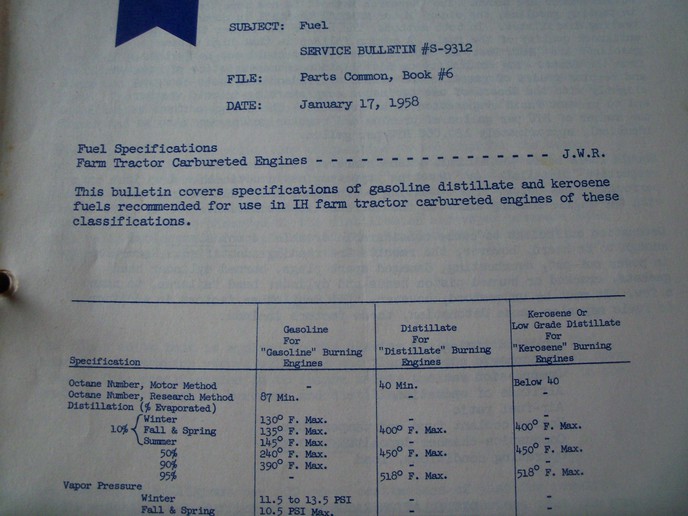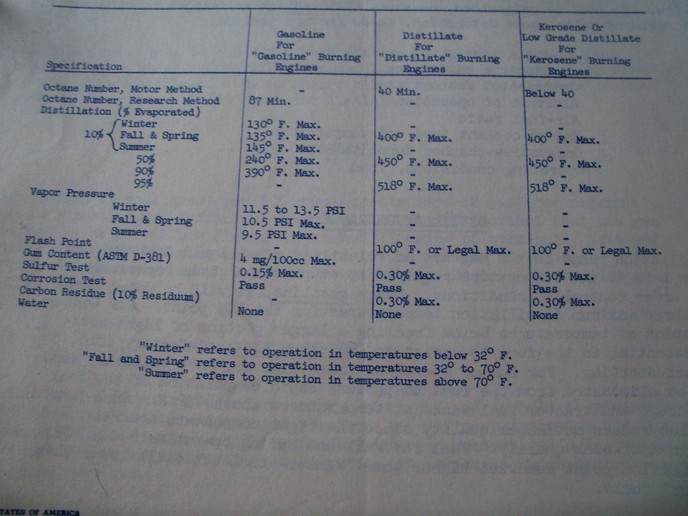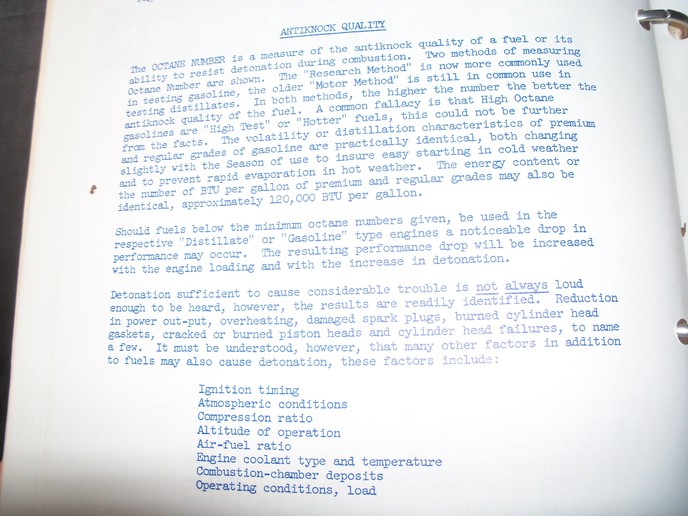You should upgrade or use an alternative browser.
- Thread starter D Slater
- Start date
Janicholson
Well-known Member
CenTex Farmall
Well-known Member
The upshot being that today's pump gas rating well exceeds what is required in the manual.
Good post! Interesting how the manual elaborates on difference and similarities between High Test and Regular.
the tractor vet
Well-known Member
the tractor vet
Well-known Member
Janicholson
Well-known Member
I found this in tractor Data .com if it is relevant. Jim
Interntional Harvester C291
Fuel: gasoline
Cylinders: 6
Valves: -unknown-
Bore/Stroke: 3.75x4.39 inches [95 x 112 mm]
Displacement: 291 ci [4.8 L]
Cooling: liquid
Compression: 7.5:1
Rated RPMs: 2300
the tractor vet
Well-known Member
rustyacresnd
Member
Similar threads
- Replies
- 10
- Views
- 270
- Replies
- 17
- Views
- 462
- Replies
- 3
- Views
- 300
We sell tractor parts! We have the parts you need to repair your tractor - the right parts. Our low prices and years of research make us your best choice when you need parts. Shop Online Today.
Copyright © 1997-2024 Yesterday's Tractor Co.
All Rights Reserved. Reproduction of any part of this website, including design and content, without written permission is strictly prohibited. Trade Marks and Trade Names contained and used in this Website are those of others, and are used in this Website in a descriptive sense to refer to the products of others. Use of this Web site constitutes acceptance of our User Agreement and Privacy Policy TRADEMARK DISCLAIMER: Tradenames and Trademarks referred to within Yesterday's Tractor Co. products and within the Yesterday's Tractor Co. websites are the property of their respective trademark holders. None of these trademark holders are affiliated with Yesterday's Tractor Co., our products, or our website nor are we sponsored by them. John Deere and its logos are the registered trademarks of the John Deere Corporation. Agco, Agco Allis, White, Massey Ferguson and their logos are the registered trademarks of AGCO Corporation. Case, Case-IH, Farmall, International Harvester, New Holland and their logos are registered trademarks of CNH Global N.V.
Yesterday's Tractors - Antique Tractor Headquarters
Website Accessibility Policy




